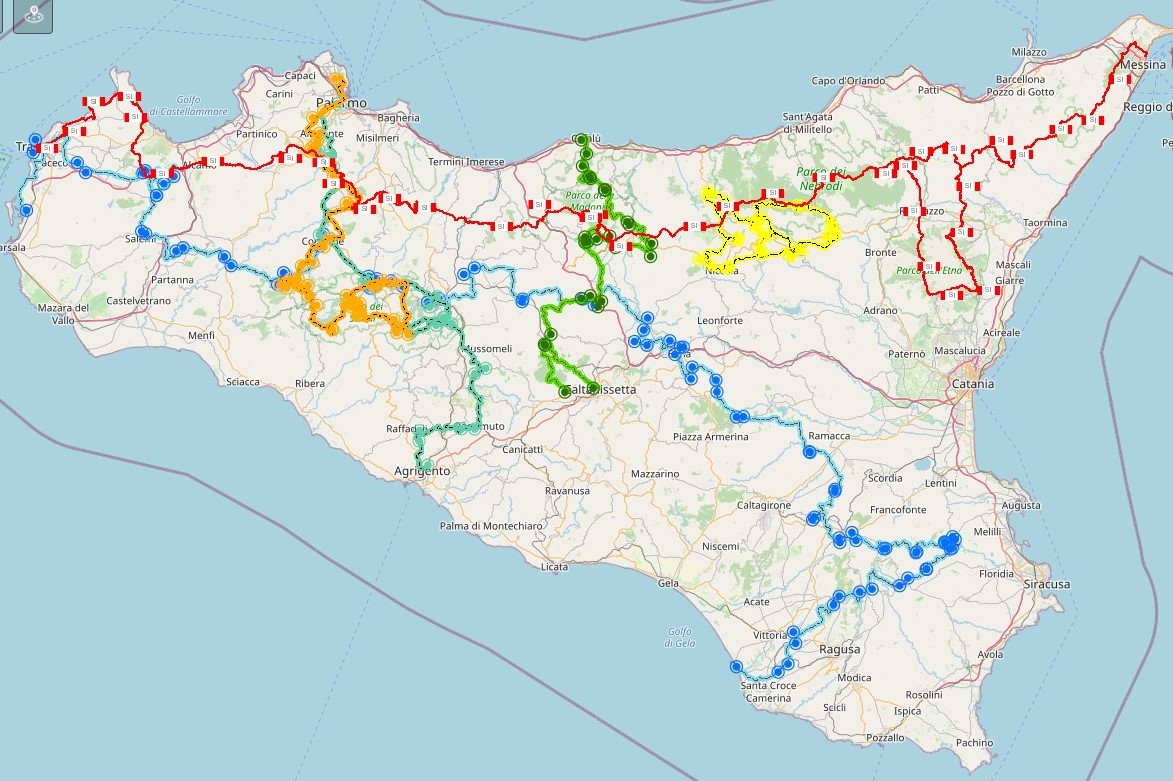In the footsteps of St Bernard
Detail
One of the Sacred and Faithful Paths in Sicily not to be missed is the itinerary in the Footsteps of Saint Bernard, a route that combines faith, art and nature in western Sicily.
The route retraces the life and places of Saint Bernard of Corleone, born Filippo Latino (1605-1667), a symbol of those who want to redeem themselves from a life of sin.
The Path in the Footsteps of Saint Bernard consists of 10 stages between the provinces of Palermo and Agrigento, from Corleone to Sciacca, passing through some of the most beautiful natural and artistic sites in the area. How to get your bearings on the Footsteps of San Bernardo? Easily, thanks to the special signposts placed at eye level at intersections and numbered.
Like the more famous Pilgrim’s Way to Santiago, it also provides the “Credenziale”, the travel document that accompanies the pilgrim and allows him or her to receive the “Testimonium” of completion of the pilgrimage.
The itinerary in the Footsteps of Saint Bernard starts from Corleone (PA), the birthplace of the saint. Pilgrims can plan their departure in September, on the days of the dedicated feast day, visiting his birthplace (today a small chapel) and taking part in the procession.
The second stop in the Footsteps of Saint Bernard is Campofiorito (PA), of ancient origins and linked to the Arab domination in Sicily. The Mother Church is dedicated to St Joseph, the patron saint, to whom the traditional “Tables” are still dedicated.
Walking in the Footsteps of Saint Bernard we find ourselves in Bisacquino (PA), a town particularly linked to the figure of the saint from Corleone, who spent a period in the convent here.
Continuing on, we arrive at Giuliana (PA), a small inland town, rich in history, traditions and civilisation. Giuliana boasts the presence of an important green lung, the S. Anna “Giuseppe Altamore” Suburban Park, a true jewel of biodiversity.
With the stop at Chiusa Sclafani (PA) we are halfway along the route. The town is named after Count Matteo Sclafani, who founded it in the 14th century. The best time to stop in Chiusa Sclafani? The month of June, when the long-awaited Cherry Festival takes place.
The sixth stop on the Footsteps of Saint Bernard is Palazzo Adriano (PA), one of the island’s Italo-Albanian communities and the film set of the famous, award-winning Nuovo Cinema Paradiso. Don’t miss a visit to the Museum of Arbëreshë Culture, the Cinema Museum, dedicated to director Giuseppe Tornatore, and the Water Museum.
We reach the province of Agrigento with Bivona, an ancient Norman settlement. Pilgrims on the Footsteps of Saint Bernard cannot miss a visit to the Capuchin Convent that hosted him in his continuous wanderings and preserves a portrait of him inside the church.
The town of Burgio (AG), the eighth stop on the Path of St Bernard of Corleone, lies at the foot of Mount San Nicolò. Worth visiting are the Museum of the Mummies, located in the Crypt of the Capuchin Convent, and the MUCEB – Museum of the Ceramics of Burgio, which tells the story of local artistic majolica.
The next stop in the Footsteps of Saint Bernard is Caltabellotta (AG), home to another important Capuchin Convent and the Poggiodiana Castle. A town rich in religious and culinary traditions to discover.
The last stop on the Path of St Bernard of Corleone, Sciacca. Famous worldwide for its historical Carnival, to which a special museum is also dedicated, it is among the oldest towns in Sicily, embellished with churches, sanctuaries and Baroque palaces.
For more information, visit Sulle Orme di San Bernardo website.
Regional web map of paths and routes for soft mobility realised by LabGis Osservatorio Turistico della Regione Sicilia, in collaboration with FIAB Sicilia and CAI Sicilia.
Share this content!
LOCATION
DURATION
Distance
120 KM
Difficulty
Medium - High
Places
Categories
AROUND






